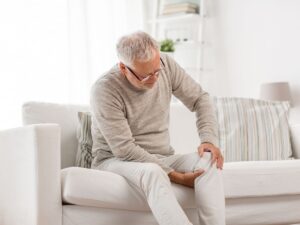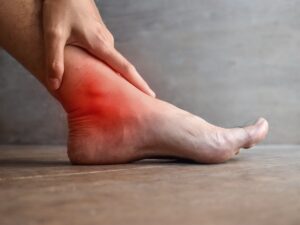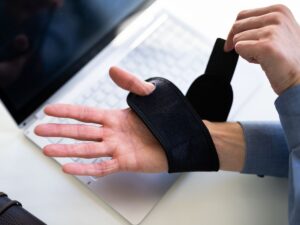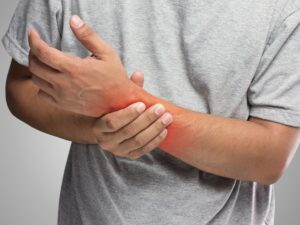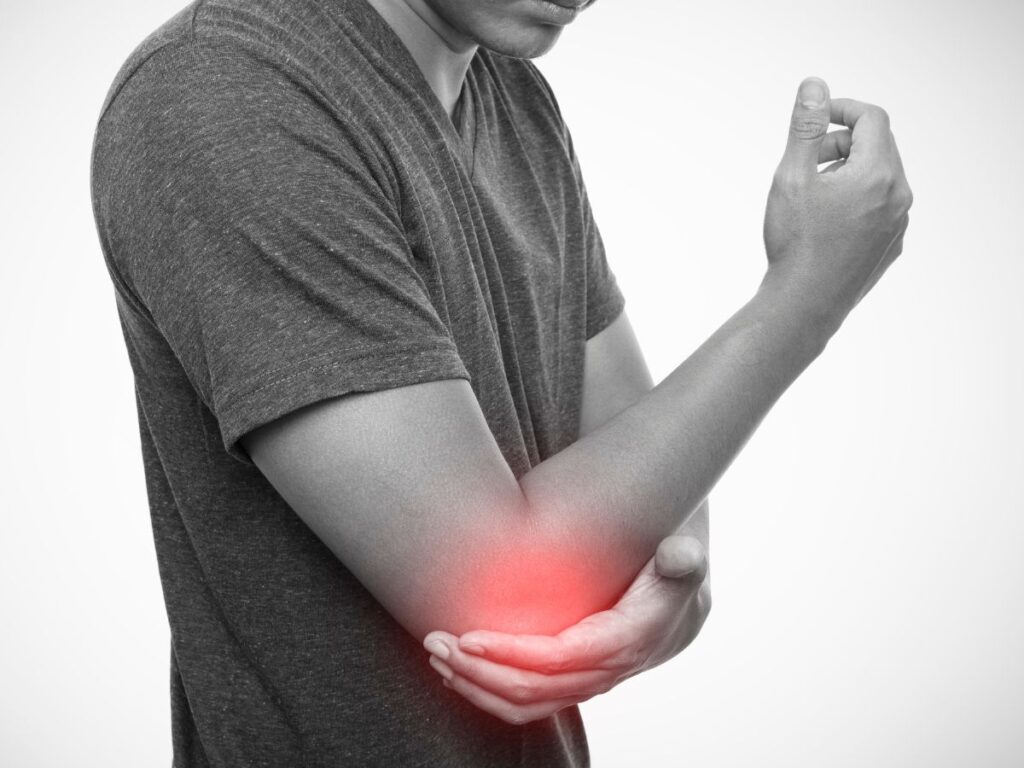Understanding Knee Pain
Knee pain is a widespread complaint that can disrupt every aspect of daily life, from walking and climbing stairs to participating in sports or enjoying hobbies. This complex joint, formed by the femur (thighbone), tibia (shinbone), and patella (kneecap), relies on ligaments, tendons, and cartilage for seamless movement. Unfortunately, repetitive stress, injury, and degenerative changes can jeopardize these structures. Many individuals postpone seeking help until the pain becomes severe, unaware that timely treatment can often prevent chronic issues. Whether you’re an athlete, a busy professional, or an older adult, an effective knee pain relief treatment plan involves identifying the root cause, addressing inflammation, and strengthening supporting muscles. By combining conservative therapies, targeted exercise, and lifestyle adjustments, you can restore mobility and reclaim an active lifestyle. If you want personalized guidance, our resource on Knee Pain Relief Treatment outlines tailored strategies for each patient’s unique situation.
Common Causes of Knee Pain
The knee is particularly vulnerable to wear and tear due to its significant load-bearing role. Some prevalent contributors include:
- Osteoarthritis: Cartilage degeneration over time leads to joint pain, stiffness, and reduced range of motion.
- Meniscus Tears: Twisting injuries can damage these shock-absorbing cartilage pads, causing pain, swelling, or catching sensations.
- Ligament Sprains and Tears: The ACL, MCL, LCL, and PCL ligaments may be overstretched or torn during sports or accidents, often resulting in instability.
- Patellofemoral Pain Syndrome: Imbalances in thigh muscles or poor kneecap tracking generate discomfort around or behind the kneecap.
- Tendinitis: Repetitive movements can inflame tendons such as the patellar tendon, leading to symptoms like localized tenderness and swelling.
When untreated, mild knee problems can progress into chronic pain, making early intervention an essential step toward comprehensive recovery. An accurate assessment by a healthcare professional—like a physical therapist, orthopedic specialist, or chiropractor—can pinpoint which of these causes are triggering your discomfort.
Signs and Symptoms That Warrant Attention
While occasional knee aches might resolve on their own, certain warning signs indicate a more significant issue:
- Persistent Swelling or Redness: Inflammation that doesn’t subside within a few days could signal ligament damage, joint effusion, or infection.
- Locking or Giving Way: If the knee frequently locks up or feels unstable, you could have a meniscus tear or a severe ligament injury.
- Inability to Bear Weight: Extreme pain while standing or walking may indicate a fracture or advanced arthritic changes.
- Gradual Worsening: Ongoing pain that intensifies over weeks or months might suggest a degenerative condition like osteoarthritis.
- Joint Deformities or Misalignment: Noticeable changes in knee shape, such as bowing or knocking, should be professionally evaluated.
Seeking prompt medical attention for these symptoms often prevents minor injuries from escalating. Early evaluation offers the best chance to avoid long-term complications, reduce pain, and safeguard healthy knee function.
Conservative Therapies for Knee Pain
Many individuals benefit from conservative measures that focus on relieving pain, reducing inflammation, and restoring mobility:
- RICE Method: Rest, Ice, Compression, and Elevation help curb acute swelling and discomfort. This strategy is especially useful in the first 48–72 hours after an injury.
- Nonsteroidal Anti-Inflammatory Drugs (NSAIDs): Over-the-counter medications such as ibuprofen or naproxen can temporarily alleviate pain and swelling, though prolonged use should be monitored.
- Bracing or Supportive Gear: Knee braces and wraps provide joint stability, particularly for ligament sprains or arthritic knees.
- Weight Management: Shedding even a small percentage of body weight decreases stress on the knee, easing symptoms of degenerative conditions.
- Orthotics and Footwear Adjustments: Proper arch support and shock-absorbing shoes can correct gait imbalances that aggravate the knee.
These foundational tactics act as an initial line of defense against further damage. Combining them with targeted rehabilitation exercises and professional guidance often yields more sustainable relief.
The Role of Physical Therapy
Physical therapy remains a cornerstone of knee pain relief treatment, targeting muscle imbalances and faulty biomechanics that strain the knee joint. A trained therapist will develop a personalized exercise regimen to enhance strength, flexibility, and stability. Core components include:
- Strengthening Exercises: Moves like squats, lunges, and leg presses (when done with proper form) build support around the knee.
- Flexibility Work: Targeted stretches improve the range of motion in the hamstrings, quadriceps, and calf muscles, minimizing joint stress.
- Proprioception and Balance Drills: Single-leg stands or balance board exercises train the nervous system to stabilize the knee during daily tasks.
- Manual Therapy: Therapists may perform joint mobilizations or soft tissue work to reduce stiffness and break down scar tissue.
- Movement Retraining: Correcting subtle gait or posture issues relieves repetitive stress that often contributes to chronic pain.
As you progress, the therapist adjusts the intensity and complexity of each exercise to keep pace with your recovery. In many cases, consistent physical therapy can delay—or even eliminate—the need for more invasive interventions like surgery.
When Chiropractic Care Comes Into Play
Chiropractic services can be a valuable addition, particularly when misalignment in the hips, pelvis, or spine affects the knee. Dr. Elham, for instance, examines the entire kinetic chain to pinpoint hidden sources of strain. Through manual adjustments, specialized mobilizations, or soft tissue techniques, she works to reestablish joint harmony and improve weight distribution across the knees. If relevant, Dr. Elham might prescribe at-home exercises that complement chiropractic sessions, bolstering stability in the knee and related structures. By combining alignment-focused care with conventional physical therapy, patients often see faster improvements in pain levels, range of motion, and overall functionality.
Injections and Regenerative Therapies
When conservative methods fall short, certain injectable treatments may provide relief:
- Corticosteroid Injections: These anti-inflammatory shots deliver medication directly into the knee, reducing swelling and pain for weeks or months.
- Viscosupplementation: Injections of hyaluronic acid aim to restore lubrication within the joint, which can help ease pain from osteoarthritis.
- Platelet-Rich Plasma (PRP): Using a patient’s own blood platelets, PRP therapy may promote tissue repair and reduce inflammation in injured or arthritic knees.
- Stem Cell Injections: Though still under investigation, some evidence suggests that stem cells could foster cartilage regeneration in certain knee conditions.
While these options can bring meaningful relief, they typically serve as part of a broader plan that includes exercise, manual therapy, and lifestyle modifications. Consulting with an orthopedic specialist ensures that you select the most appropriate injection type, dosage, and scheduling.
Choosing the Right Exercise Strategy
Regular physical activity supports both knee health and overall well-being, but not all exercises are equally beneficial. High-impact pursuits, such as running or jumping, can aggravate existing knee issues. Instead, consider low-impact options like swimming, cycling, and elliptical training. These activities deliver cardiovascular benefits without placing excessive stress on the knee. If you enjoy strength training, performing controlled movements at lower weights—and focusing on proper form—minimizes the risk of aggravating the joint. As your knee stabilizes, you can gradually reintroduce higher-impact exercises if desired. Always communicate with your healthcare team about your activity level, especially if you notice new or worsening symptoms.
Overcoming Fear of Movement
Many people with knee pain become anxious about physical activities, fearing further damage or intense discomfort. However, avoiding movement altogether often weakens the supporting musculature, exacerbating instability and pain. Physical therapists and chiropractors like Dr. Elham can help you strike the right balance: they’ll recommend gentle exercises that promote joint mobility without pushing you past safe limits. Gradual exposure to tolerable movements not only strengthens your knee but also rebuilds confidence, showing you can move without dire consequences. Incorporating mindfulness or relaxation techniques can also help manage anxiety around movement, reducing tension in the muscles surrounding the knee.
Weight Management for Knee Relief
Knees bear significant load during daily tasks, so excessive body weight amplifies stress on the joint structures. Even a modest weight reduction—5% to 10% of total body weight—often translates to noticeable pain relief. If needed, healthcare providers may recommend diet adjustments that focus on nutrient-dense foods and portion control. Adding low-impact exercises accelerates fat loss, all while improving knee function and muscle tone. Weight loss is particularly beneficial for osteoarthritis patients, slowing the condition’s progression by reducing wear on cartilage. A well-rounded approach to weight management optimizes both short-term pain relief and long-term joint health.
Evaluating Surgical Options
When knee pain persists despite comprehensive conservative treatment, surgical interventions may come into play. Procedures range from minimally invasive arthroscopic surgeries—aimed at repairing meniscus tears or removing loose bodies—to total knee replacements in advanced degenerative cases. While surgery can significantly enhance quality of life, it requires a careful cost-benefit analysis. Recovery periods vary, and rehabilitation is often extensive, demanding consistent physical therapy and strict adherence to post-operative guidelines. For many, surgery serves as a last resort, pursued only after other avenues have been thoroughly explored. If you’re unsure about a surgical recommendation, seeking a second opinion can provide clarity and reassurance.
Maintaining Progress and Preventing Recurrence
Even after you’ve overcome the worst of your knee pain, continuing certain exercises and cautionary measures is essential for lasting results. Therapists frequently prescribe at-home routines that reinforce stability, balance, and flexibility. Checking posture during daily tasks—such as lifting boxes, climbing stairs, or playing sports—keeps improper mechanics from sneaking back in. Regular follow-up appointments with medical professionals, including Dr. Elham, can catch early indicators of relapse. If minor flare-ups do occur, prompt attention—like returning to gentle exercises, icing, or bracing—can often prevent a full-blown recurrence. By committing to a proactive maintenance strategy, patients retain knee function and reduce the need for future interventions.
Mind-Body Integration for Knee Pain
Chronic knee pain doesn’t merely strain the body; it can also erode mental well-being. Stress and anxiety magnify pain perception, establishing a negative feedback loop where discomfort fosters tension in muscles around the knee. Techniques like yoga, Tai Chi, or simple mindfulness exercises help break this cycle by promoting relaxation and balanced muscle engagement. Deep breathing or progressive muscle relaxation calms the nervous system, reducing cortisol levels that fuel inflammation. Some patients also explore cognitive-behavioral therapy (CBT) to reframe pain-related thoughts and cultivate coping strategies. Blending physical rehab with psychological support often yields faster improvements and a more positive outlook on recovery.
Customizing Your Knee Pain Relief Plan
No two knee conditions are alike, so personalizing your relief strategy is crucial. Whether you suffer from a sports-related injury, age-related wear-and-tear, or complications from an underlying condition, your treatment should reflect your lifestyle and goals. An office worker with mild patellofemoral syndrome might need desk-friendly stretches and ergonomic modifications, whereas a competitive athlete with an ACL tear requires intensive rehab and sport-specific drills. Collaborating with professionals across different specialties—orthopedics, chiropractic care, physical therapy—helps ensure every angle is covered. For a more detailed look at how individualized plans can boost outcomes, our Knee Pain Relief Treatment resource delves into multifaceted approaches and frequently asked questions.
Looking Ahead
Knee pain can feel overwhelming, but it doesn’t have to be a life sentence. By addressing the root causes and implementing a balanced mix of therapies—ranging from basic self-care to advanced medical interventions—most patients regain comfort, stability, and confidence in daily activities. Professionals like Dr. Elham stand ready to guide you through each phase of recovery, from initial evaluation to long-term maintenance strategies. Over time, you’ll discover how consistent exercise, mindful movement, and periodic professional check-ins keep your knees functioning at their best. If you’re ready to embark on the journey to a pain-free life, take the first step by consulting qualified experts and exploring personalized treatments that align with your unique needs. With perseverance and proactive care, relief and resilience are within reach.



